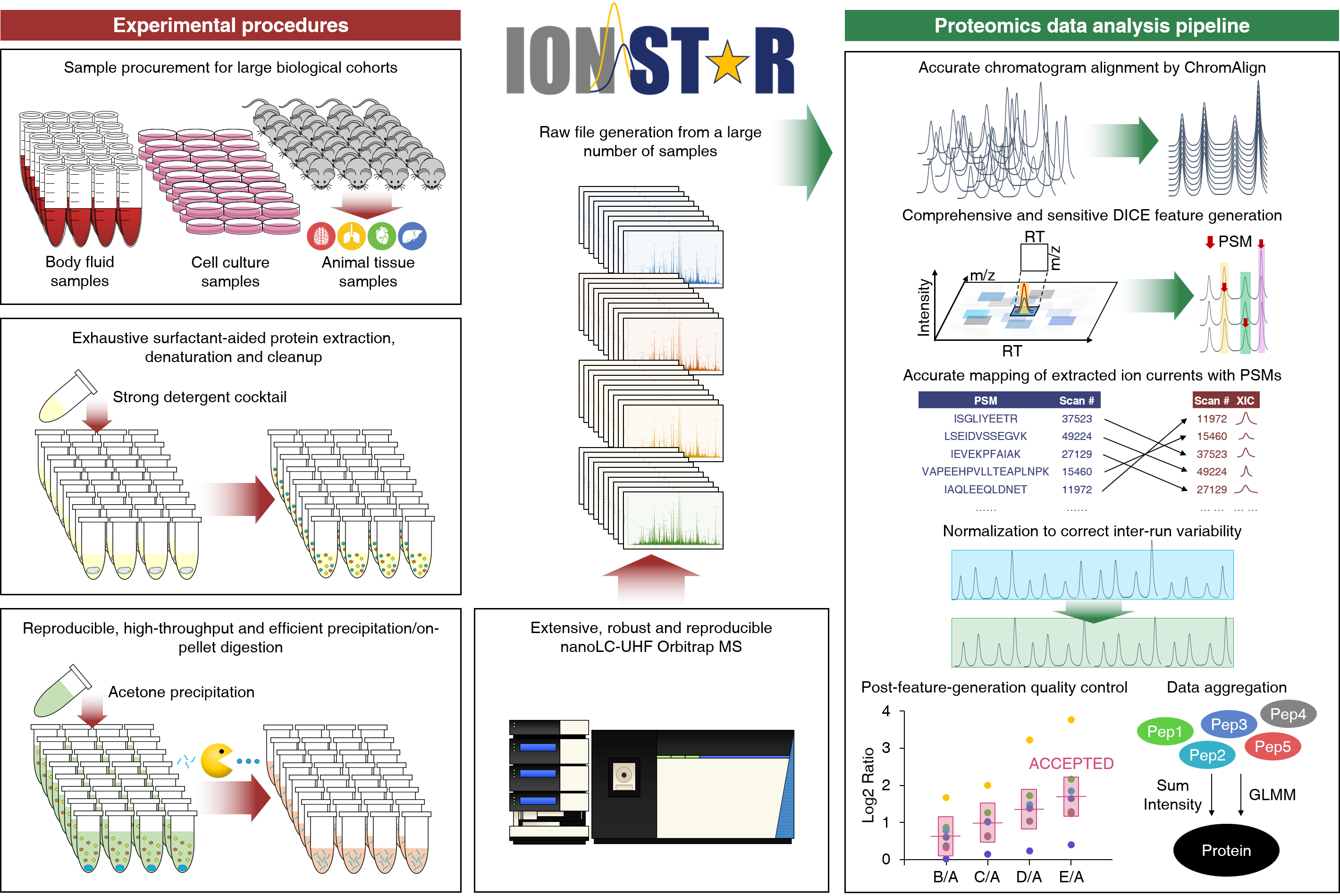 |


Ion-current-based MS1 global proteomic quantification

IonStar is an MS1-based quantitative method devised for large-cohort proteomics analysis, which prominently alleviates issues associated with quantitative precision, missing data, and false-positive discovery of protein changes.IonStar features a series of experimental procedures to guarantee efficient and extensive peptide derivatization as well as sensitive and robust LC-MS analysis, plus a data processing pipeline to achieve precise and reproducible protein measurement in sample sets with high replicate numbers.
The experimental procedures start with a surfactant cocktail-aided extraction/precipitation/on-pellet digestion (SEPOD) protocol, which uses a high-concentration surfactant mixture for exhaustive protein extraction, extensive protein denaturation, and effective removal of detrimental matrix components. Peptides are separated with a high-capacity and reproducible reversed-phase-nano-LC approach on a 100-cm long column with a large-i.d. trap setting, and are detected by an ultra-high field (UHF) Orbitrap mass spectrometer under high MS1 resolution (e.g. 120k). Overall, these procedures set a solid foundation for high-quality MS1-based quantification in large sample cohorts.
The data analysis portion combines efficient/reproducible experimental procedures with unique data processing components such as an efficient 3D chromatographic alignment, a sensitive and selective direct ion-current extraction, and stringent post-feature-generation quality control. Compared with several popular label-free methods, IonStar exhibited far lower missing data (0.1%), superior quantitative accuracy/precision (~5% intra-group CV), the widest protein-abundance range and highest sensitivity/specificity for identifying protein changes (<5% False Altered-protein Discovery). In a single analytical batch, IonStar is capable of achieving highly reproducible and robust analysis of >100 biological replicates with >8K protein coverage and consistent quantitative quality (i.e. missing data level, accuracy/precision, protein-abundance range, False Altered-protein Discovery Rate). In sum, IonStar represents a reliable and robust solution for precise and reproducible protein measurement in large cohorts.
Downloading IonStar data analysis package (manual enclosed): UHR-IonStar Github link
References:


